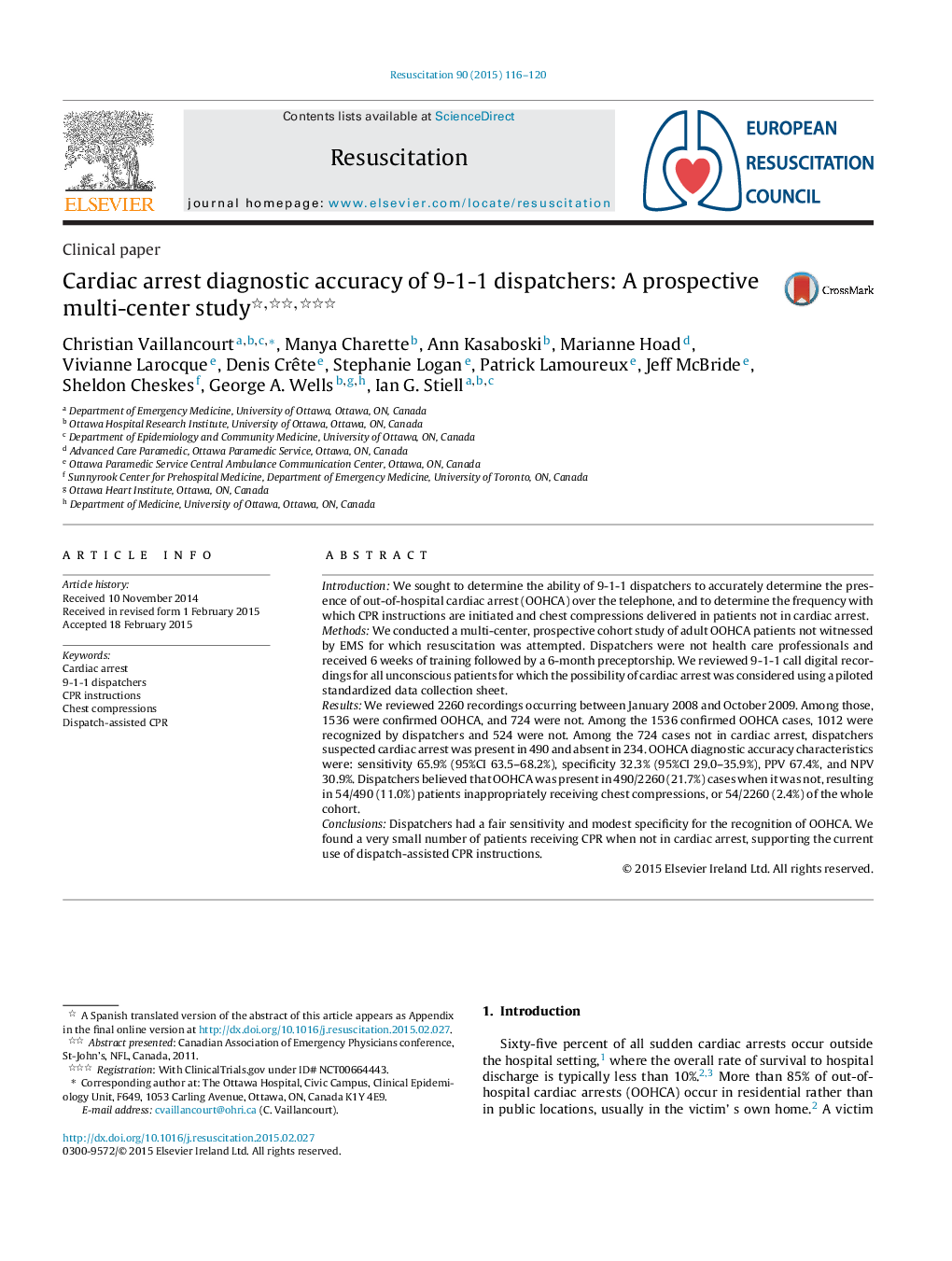| Article ID | Journal | Published Year | Pages | File Type |
|---|---|---|---|---|
| 3007943 | Resuscitation | 2015 | 5 Pages |
IntroductionWe sought to determine the ability of 9-1-1 dispatchers to accurately determine the presence of out-of-hospital cardiac arrest (OOHCA) over the telephone, and to determine the frequency with which CPR instructions are initiated and chest compressions delivered in patients not in cardiac arrest.MethodsWe conducted a multi-center, prospective cohort study of adult OOHCA patients not witnessed by EMS for which resuscitation was attempted. Dispatchers were not health care professionals and received 6 weeks of training followed by a 6-month preceptorship. We reviewed 9-1-1 call digital recordings for all unconscious patients for which the possibility of cardiac arrest was considered using a piloted standardized data collection sheet.ResultsWe reviewed 2260 recordings occurring between January 2008 and October 2009. Among those, 1536 were confirmed OOHCA, and 724 were not. Among the 1536 confirmed OOHCA cases, 1012 were recognized by dispatchers and 524 were not. Among the 724 cases not in cardiac arrest, dispatchers suspected cardiac arrest was present in 490 and absent in 234. OOHCA diagnostic accuracy characteristics were: sensitivity 65.9% (95%CI 63.5–68.2%), specificity 32.3% (95%CI 29.0–35.9%), PPV 67.4%, and NPV 30.9%. Dispatchers believed that OOHCA was present in 490/2260 (21.7%) cases when it was not, resulting in 54/490 (11.0%) patients inappropriately receiving chest compressions, or 54/2260 (2.4%) of the whole cohort.ConclusionsDispatchers had a fair sensitivity and modest specificity for the recognition of OOHCA. We found a very small number of patients receiving CPR when not in cardiac arrest, supporting the current use of dispatch-assisted CPR instructions.
